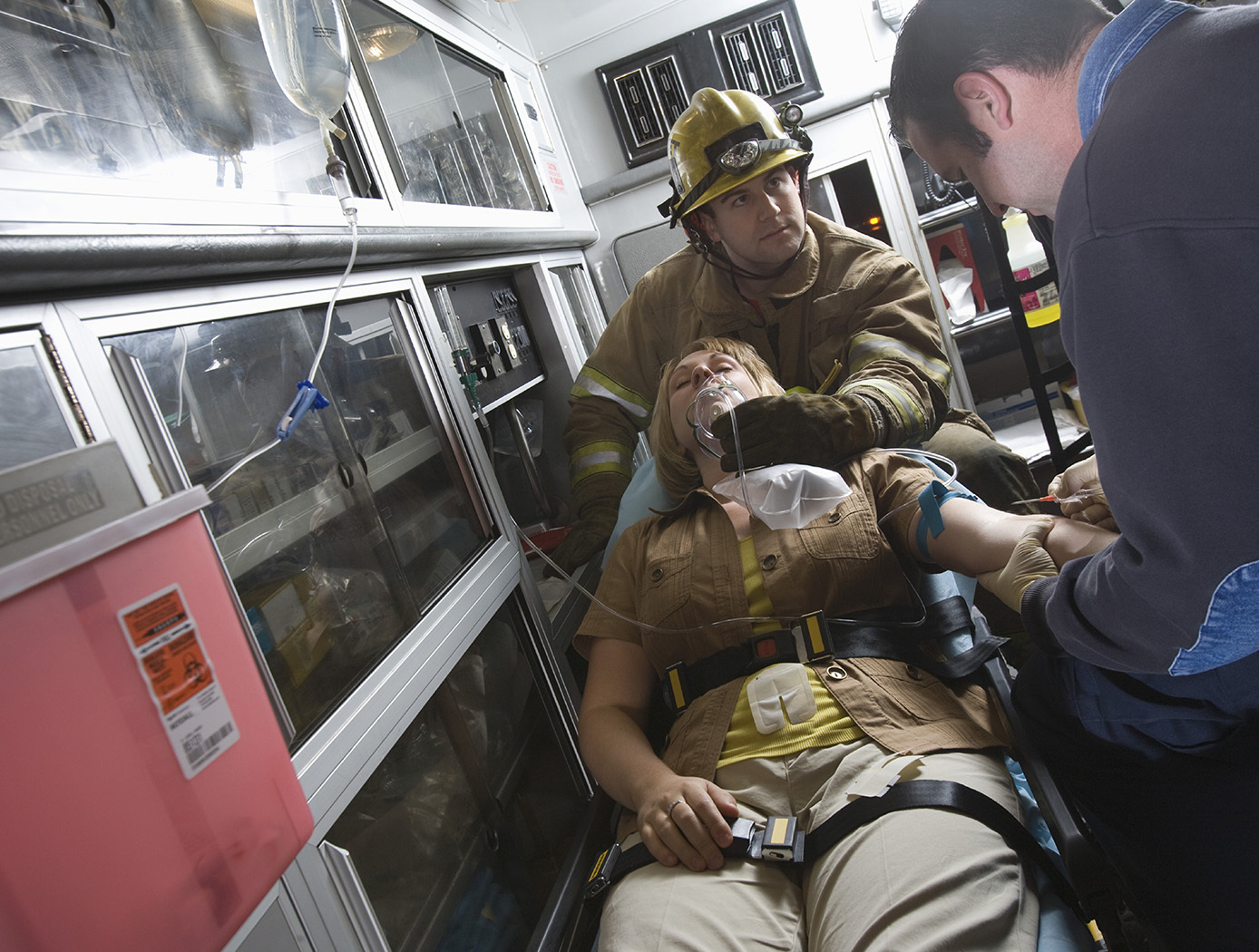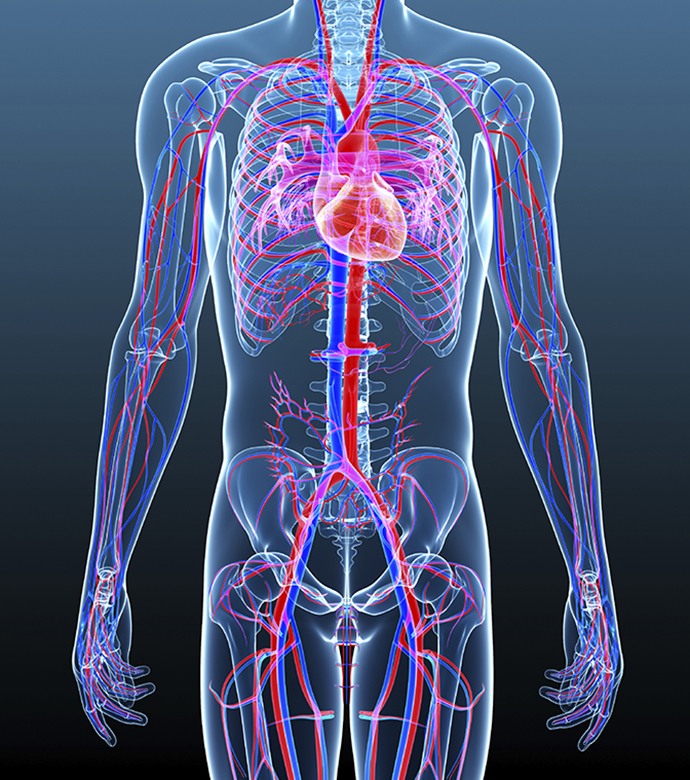Subcutaneous Structure Imager
health medicine and biotechnology
Subcutaneous Structure Imager (LEW-TOPS-82)
Uses near-infrared imaging to improve health providers' ability to locate veins in patients
Overview
Scientists at NASA's Glenn Research Center have successfully developed a novel subcutaneous structure imager for locating veins in challenging patient populations, such as juvenile, elderly, dark-skinned, or obese patients. Spurred initially by the needs of pediatric sickle-cell anemia patients in Africa, Glenn's groundbreaking system includes a camera-processor-display apparatus and uses an innovative image-processing method to provide two- or three-dimensional, high-contrast visualization of veins or other vasculature structures. In addition to assisting practitioners to find veins in challenging populations, this system can also help novice healthcare workers locate veins for procedures such as needle insertion or excision. Compared to other state-of-the-art solutions, the imager is inexpensive, compact, and very portable, so it can be used in remote third-world areas, emergency response situations, or military battlefields.
The Technology
Current subcutaneous vessel imagers use large, multiple, and often separate assemblies with complicated optics to image subcutaneous structures as two-dimensional maps on a wide monitor, or as maps extracted by a computer and focused onto the skin by a video projection. The scattering of infrared light that takes place during this process produces images that are shadowy and distorted. By contrast, Glenn's innovative approach offers a relatively compact and inexpensive alternative to the conventional setup, while also producing clearer images that can be rendered in either two or three dimensions. Glenn's device uses off-the-shelf near-infrared technology that is not affected by melanin content and can also operate in dark environments.
In Glenn's novel subcutaneous imager, a camera is configured to generate a video frame. Connected to the camera is a processor that receives the signal for the video frame and adjusts the thresholds for darkness and whiteness. The result is that the vein (or other subcutaneous structure) will show very dark, while other surrounding features (which would register as gray) become closer to white due to the heightened contrast between thresholds. With no interval of complex algorithms required, the image is presented in real-time on a display, yielding immediate results. Glenn's advanced technology also allows the operator to achieve increased depth perception through the synchronization of a pair of imaging devices. Additionally, the novel use of a virtual-reality headset affords a three-dimensional view of the field, thereby improving the visualization of veins. In short, Glenn's researchers have produced an inexpensive, lightweight, high-utility device for locating and identifying subcutaneous structures in patients.


Benefits
- Inexpensive: Uses commercially available electronic and optical components and requires minimal operator training
- Portable: Takes up little space and is self-contained
- Robust: Utilizes durable system components that are easily serviced or replaced
- Battery-powered: Does not require an external power supply, so the imager can be used in emergency or other non-hospital environments
- Fast: Displays images in real-time and in easily interpretable form
- Versatile: Can provide 2D or 3D images
Applications
- Biomedical: Facilitate vein access for challenging patient populations, in emergency situations, aboard aircraft, and in areas with fewer skilled practitioners
- Diagnostics: Diagnose conditions currently tested with ultrasound techniques, such as stenosis of leg veins; pre-screening to determine whether a costly MRI is needed
- Screening: Provide rapid non-invasive initial screening for sub-surface lesions such as cancers and venous malformations
Technology Details
health medicine and biotechnology
LEW-TOPS-82
LEW-18048-1
LEW-18048-2
Please contact NASA Glenn Tech Transfer for companion software.
Similar Results

Portable Microscope
The handheld digital microscope features a 3D-printed chassis to house its hardware, firmware, and rechargeable Li-ion battery with built-in power management. It incorporates an internal stainless-steel cage system to enclose and provide mechanical rigidity for the optics and imaging sensor. To reduce the microscope’s size, yet retain high spatial resolution, engineers devised an optical light path that uniquely folds back on itself using high reflectivity mirrors, thus significantly reducing internal volume.
Imaging control and acquisition is performed using a secure web-based graphical user interface accessible via any wireless enabled device. The microscope serves as its own wireless access point thus obviating the need for a pre-existing network. This web interface enables multiple simultaneous connections and facilitates data sharing with clinicians, scientists, or other personnel as needed. Acquired images can be stored locally on the microscope server or on a removable SD card. Data can be securely downloaded to other devices using a range of industry standard protocols.
Although the handheld digital microscope was originally developed for in-flight medical diagnosis in microgravity applications, prototypes were thoroughly ground-tested in a variety of environments to verify the accurate resolve of microbial samples for identification and compo-sitional analysis for terrestrial field use. Owing to its portability, other applications demanding rapid results may include research, education, veterinarian, military, contagion disaster response, telemedicine, and point-of-care medicine.

Portable Medical Diagnosis Instrument
The technology utilizes four cutting-edge sensor technologies to enable minimally- or non-invasive analysis of various biological samples, including saliva, breath, and blood. The combination of technologies and sample pathways have unique advantages that collectively provides a powerful analytical capability. The four key technology components include the following: (1) the carbon nanotube (CNT) array designed for the detection of volatile molecules in exhaled breath; (2) a breath condenser surface to isolate nonvolatile breath compounds in exhaled breath; (3) the miniaturized differential mobility spectrometer (DMS) -like device for the detection of volatile and non-volatile molecules in condensed breath and saliva; and (4) the miniaturized circular disk (CD)-based centrifugal microfluidics device that can detect analytes in any liquid sample as well as perform blood cell counts. As an integrated system, the device has two ports for sample entry a mouthpiece for sampling of breath and a port for CD insertion. The breath analysis pathway consists of a CNT array followed by a condenser surface separating liquid and gas phase breath. The exhaled breath condensate is then analyzed via a DMS-like device and the separated gas breath can be analyzed by both CNT sensor array again and by DMS detectors.

Electric Field Imaging System
The EFI imaging platform consists of a sensor array, processing equipment, and an output device. By registering voltage differences at multiple points within the sensor array, the EFI system can calculate the electrical potential at points removed from the sensor. Using techniques similar to computed tomography, the electrical potential data can be assembled into a three-dimension map of the magnitude and direction of electric fields. Since objects interact with electric fields differently based on their shape and dielectric properties, this electric field data can then be used to understand shape,
internal structure, and dielectric properties (e.g., impedance, resistance) of objects in three dimensions.
The EFI sensor can be used on its own to see electric fields or image electric fieldemitting objects near the sensor (e.g., to evaluate leakage from poorly shielded wires or casings). For evaluation of objects that do not produce an electric field, NASA has developed generator that emits a low-current, human-safe electrostatic field for snapshot evaluation of objects. Additionally, an alternative EFI system optimized to evaluate electric fields at significant distances (greater than 1 mile) is being developed for weather-related applications.

Expanded COBRA Oculometrics (ECO) to Include Perimetry and Directional Assessment of Visual and Visuomotor Performance
Expanded COBRA Oculometrics (ECO) expands the oculometric assessment into the peripheral visual field and sub-divides the visual field into sub-regions defined by their eccentricity (ring) and angular range (sector) for more direct comparison with current state-of-the-art clinical imagining (e.g., OCT (Optical Coherence Tomography)) and functional testing (e.g., perimetry) methodologies. ECO improves on COBRA in two ways, 1) ECO probes multiple rings at multiple eccentricities (nominally at ~3 and ~6 deg of eccentricity to correspond to classic OCT imaging measures) and 2) ECO subdivides the conventional COBRA analysis into angular sectors (nominally into Nasal, Temporal, Superior, and Inferior quadrants again to correspond to classic OCT imaging measures but also potentially into more refined octants) to sub-sample the retina (monocularly) or the visual field (binocularly), thus parceling the data into smaller subregions organized in polar coordinates to better correspond to classic OCT imaging and other clinical imaging measures. This enables ECO to detect spatially localized impairments that would otherwise be blurred out by larger healthy regions of the retina/brain and allows for direct comparison with clinical OCT results and other clinical imaging systems. ECO sectors/rings could be tailored to enable comparison with brain MRI/A (Magnetic Resonance Imaging/Angiography) or CAT (Computer Aided Tomography) commonly used in neurology clinics so that the structural damage or pathology revealed by these standard imaging techniques can be correlated to actual function loss in corresponding sub-regions of the visual field in support of both clinical and research applications.

Computational Visual Servo
The innovation improves upon the performance of passive automatic enhancement of digital images. Specifically, the image enhancement process is improved in terms of resulting contrast, lightness, and sharpness over the prior art of automatic processing methods. The innovation brings the technique of active measurement and control to bear upon the basic problem of enhancing the digital image by defining absolute measures of visual contrast, lightness, and sharpness. This is accomplished by automatically applying the type and degree of enhancement needed based on automated image analysis.
The foundation of the processing scheme is the flow of digital images through a feedback loop whose stages include visual measurement computation and servo-controlled enhancement effect. The cycle is repeated until the servo achieves acceptable scores for the visual measures or reaches a decision that it has enhanced as much as is possible or advantageous. The servo-control will bypass images that it determines need no enhancement.
The system determines experimentally how much absolute degrees of sharpening can be applied before encountering detrimental sharpening artifacts. The latter decisions are stop decisions that are controlled by further contrast or light enhancement, producing unacceptable levels of saturation, signal clipping, and sharpness.
The invention was developed to provide completely new capabilities for exceeding pilot visual performance by clarifying turbid, low-light level, and extremely hazy images automatically for pilot view on heads-up or heads-down display during critical flight maneuvers.



